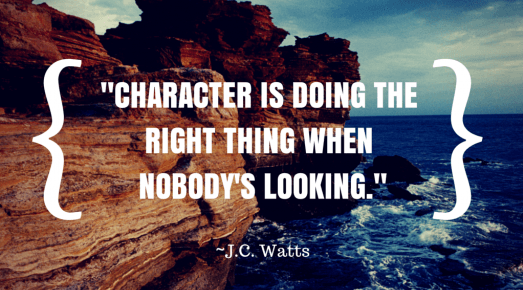
Maturity and Character: A Second Look (Wendy Samson and Curt Swenson, 2016)
After assessing what an actively-disengaged, divisive spirit looks and behaves like, it is important to shine a light on the highly-engaged, mature employees’ behaviors, in comparison:
- A mature employee’s artifacts, (clothing, jewelry, tattoos, piercings, etc.), draw attention to their thoughts and ideas, rather than to their personal preference, comfort or interests. A mature employee does not have to be reminded about being a distraction to others by what they wear.
- A mature employee feels uncomfortable after about five (5) minutes of visiting with co-workers outside of their break time. They view company time as a valuable commodity and are self-regulatory in this regard.
- Mature employees exhibit the willingness to accept constructive criticism. They have “thick skin” and are not easily “offendable”. Their stable nature and internal locus of control, help them to see interactions in a more objective light and are generally conciliatory in nature.
- Mature employees access what is called the “Growth Mindset” rather than a “Fixed Mindset” (Dweck, 2014). You will not hear them say definitive statements like, “I just tell it like it is” or “That’s just the way I am and they will have to deal with it.”
- Mature, highly-engaged employees simply do not have the time to complain. They are too busy operating in solution mode and in getting their goals and objectives met.
- Mature employees are quick to laugh and see the humor in things, but avoid making jokes or snide remarks at the expense of others.
- Mature, highly-engaged employees communicate inclusively, not exclusively with as many co-workers allowed into the process as possible. An open and “give the benefit of the doubt” communicator is the hallmark of a mature and engaged person, able to build trust with others.
- Mature employees are reasonable and can see both sides of a scenario, even if it doesn’t directly benefit them. They can reason through a decision made by someone else by asking first, “Does this positively affect our business?” and not, “How is this affecting me and my personal needs?”
